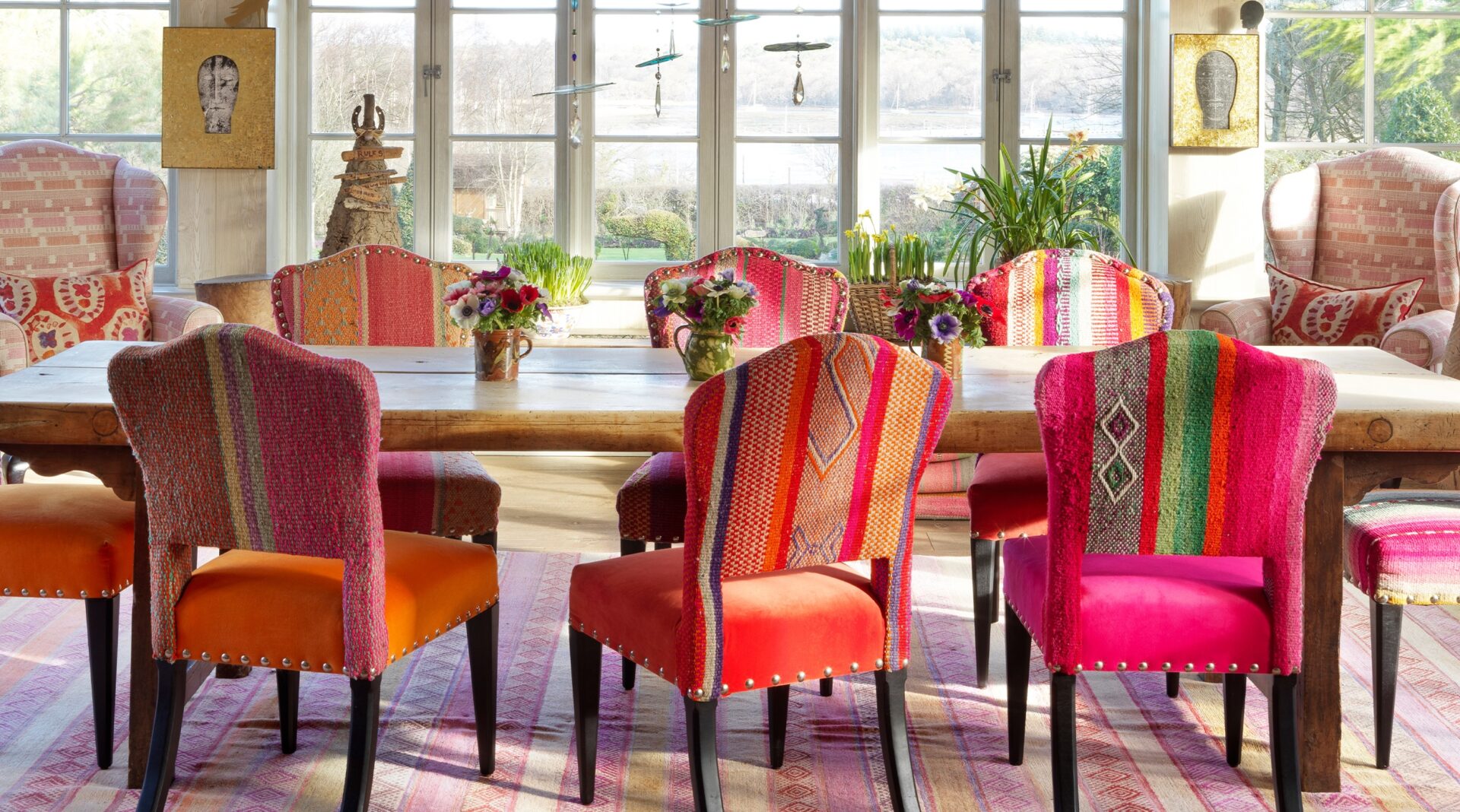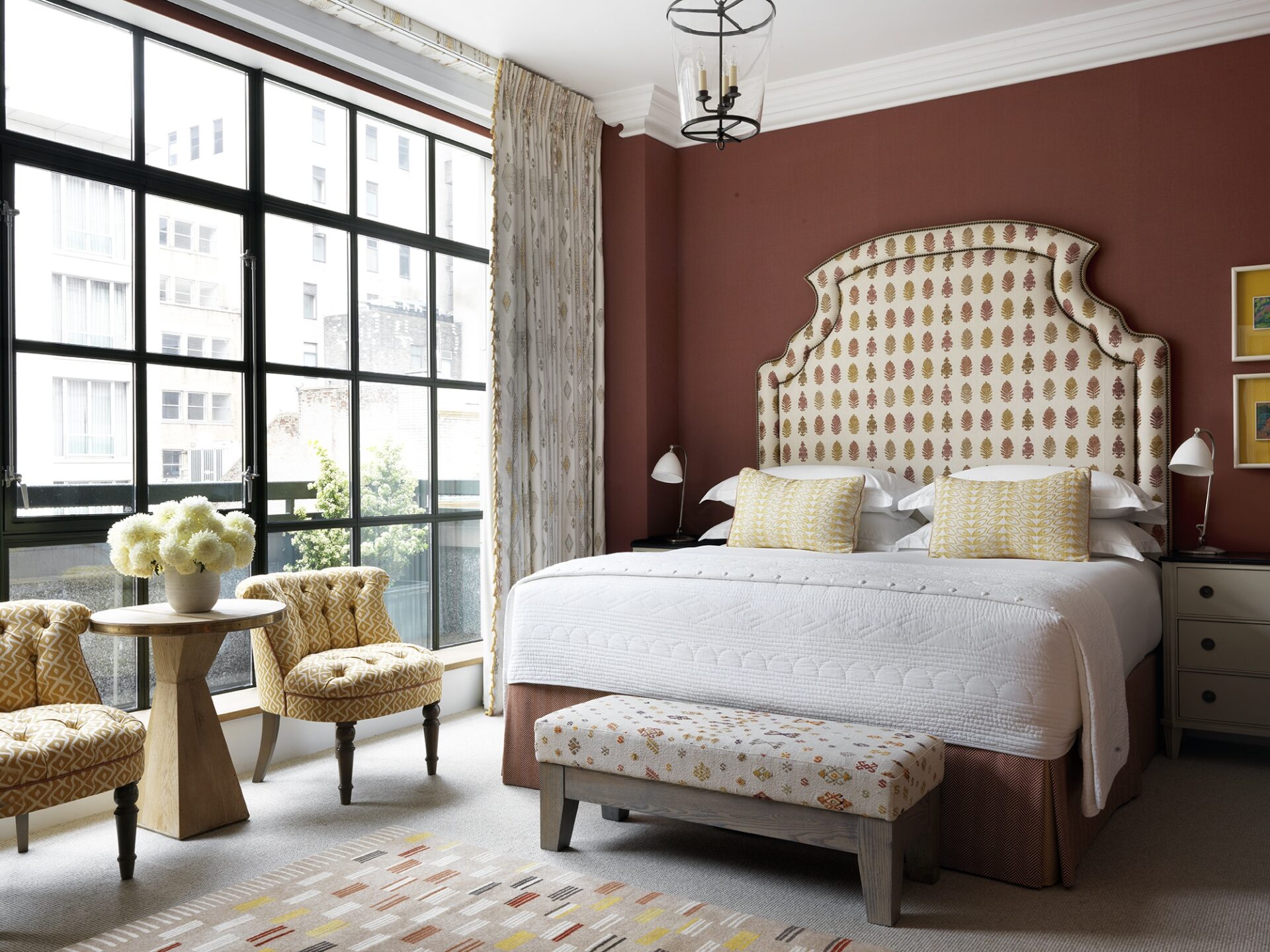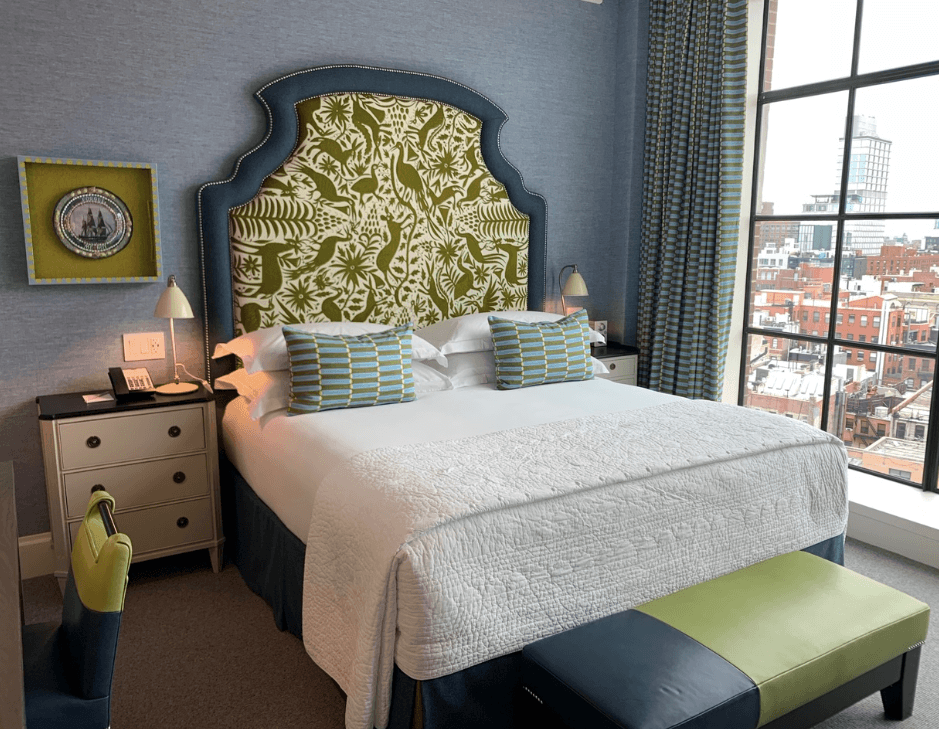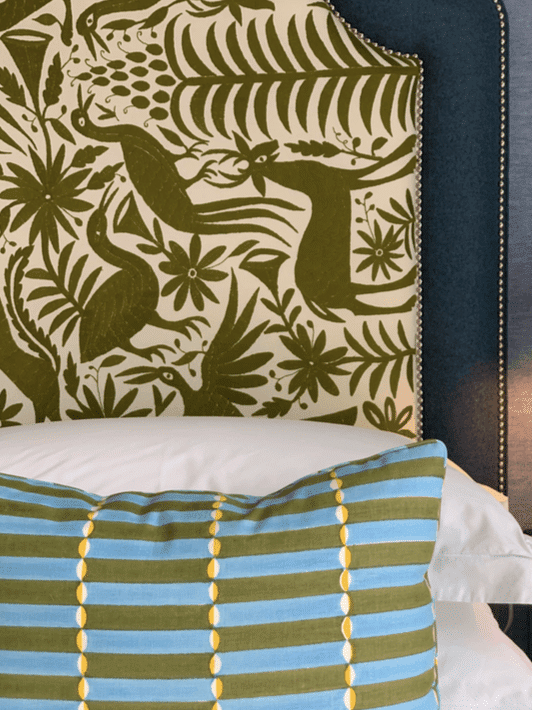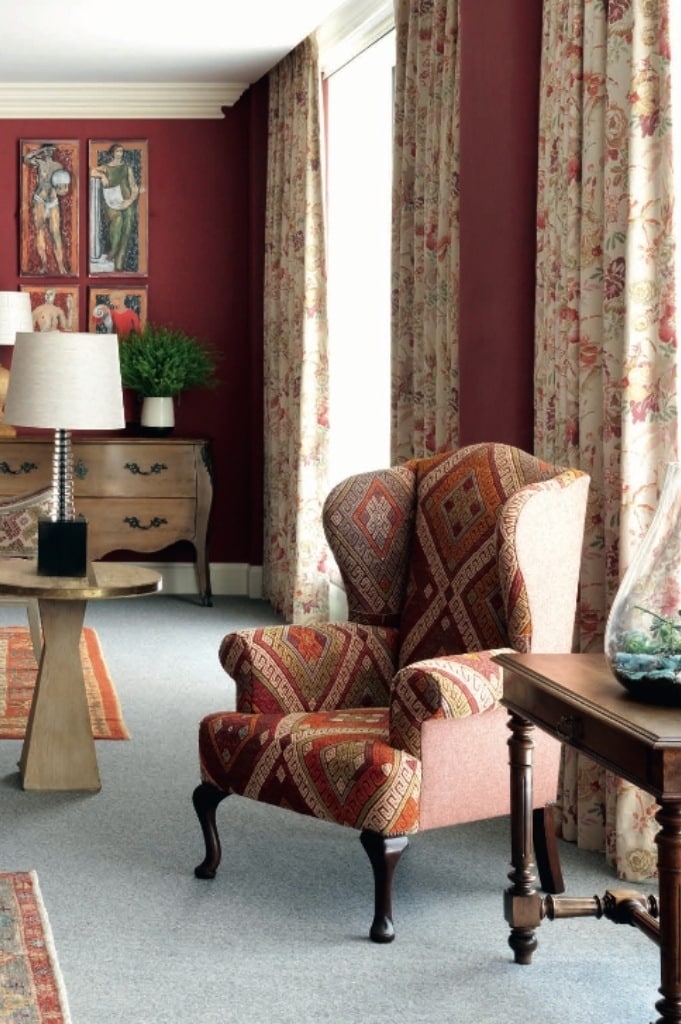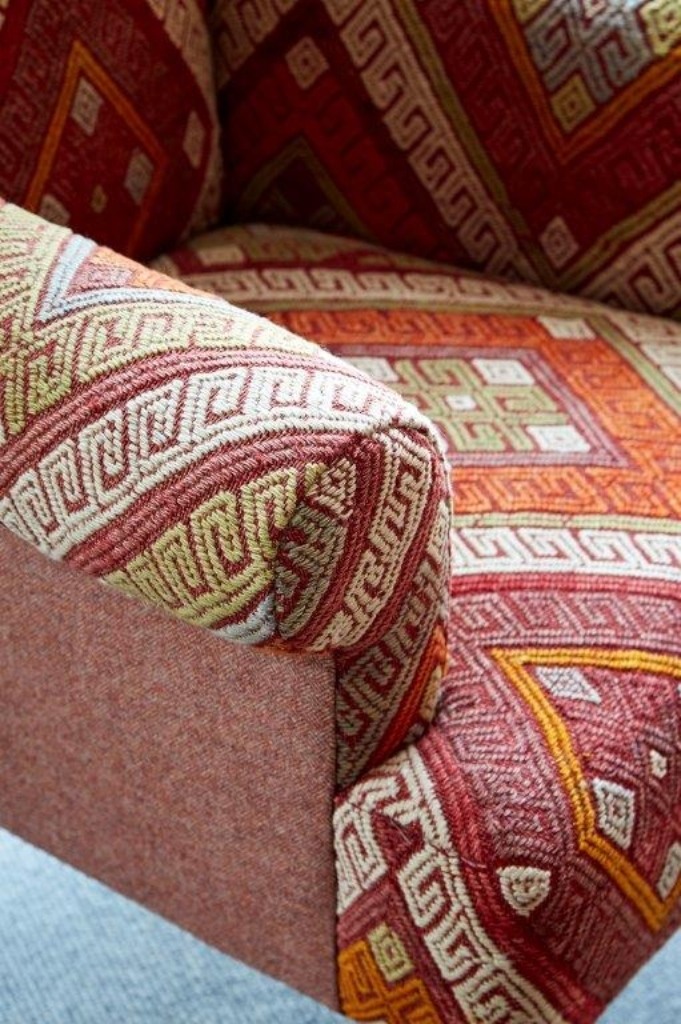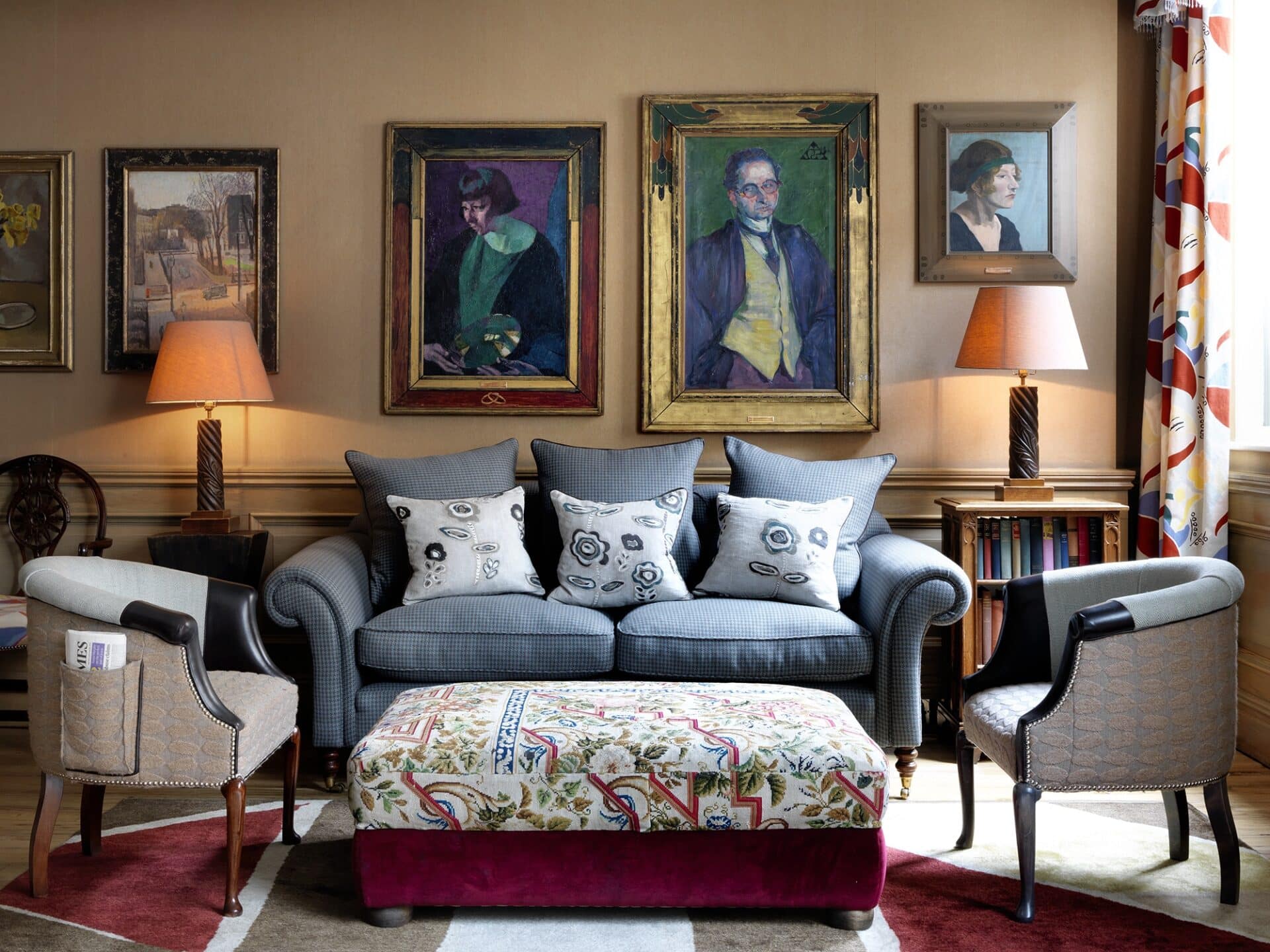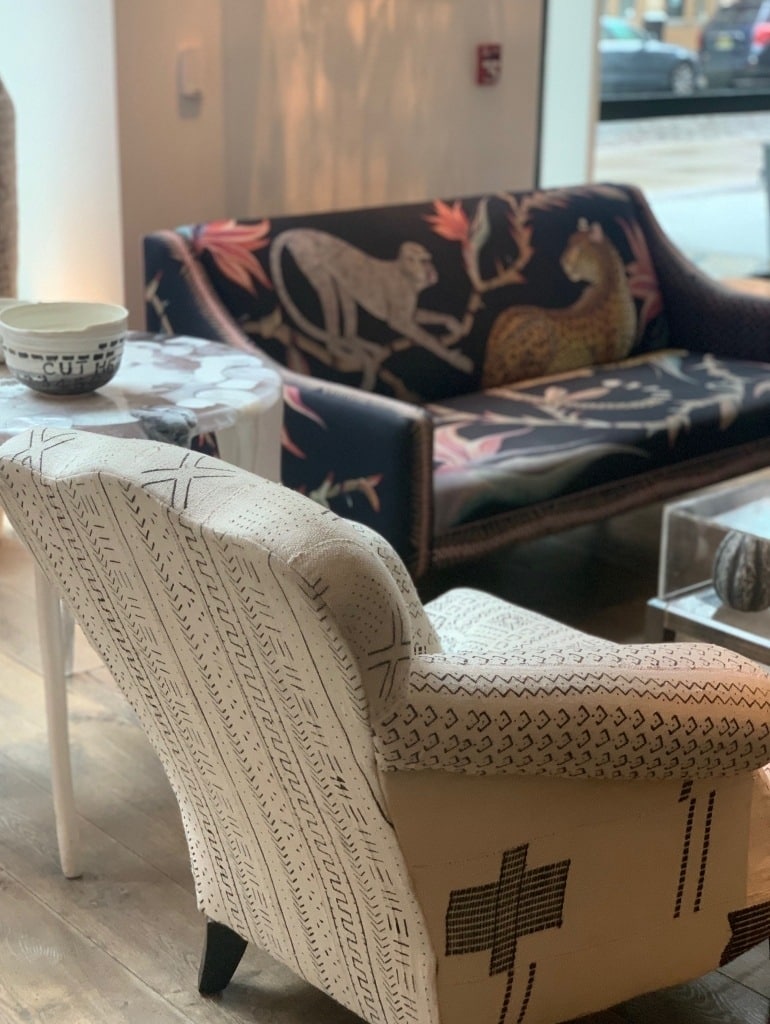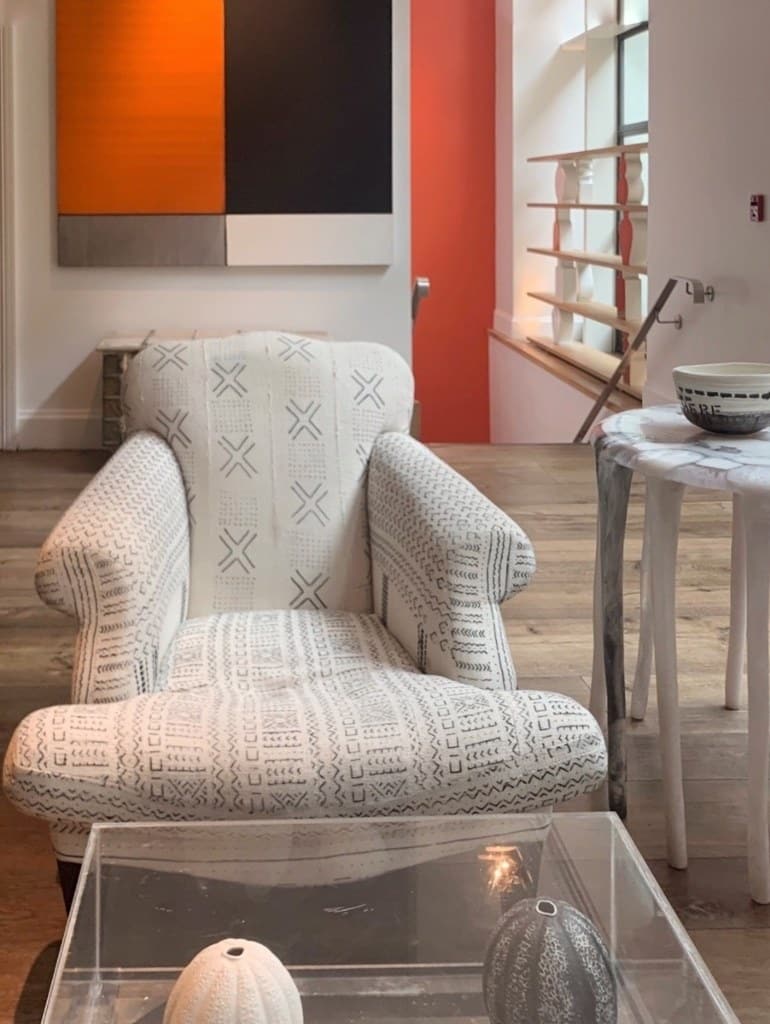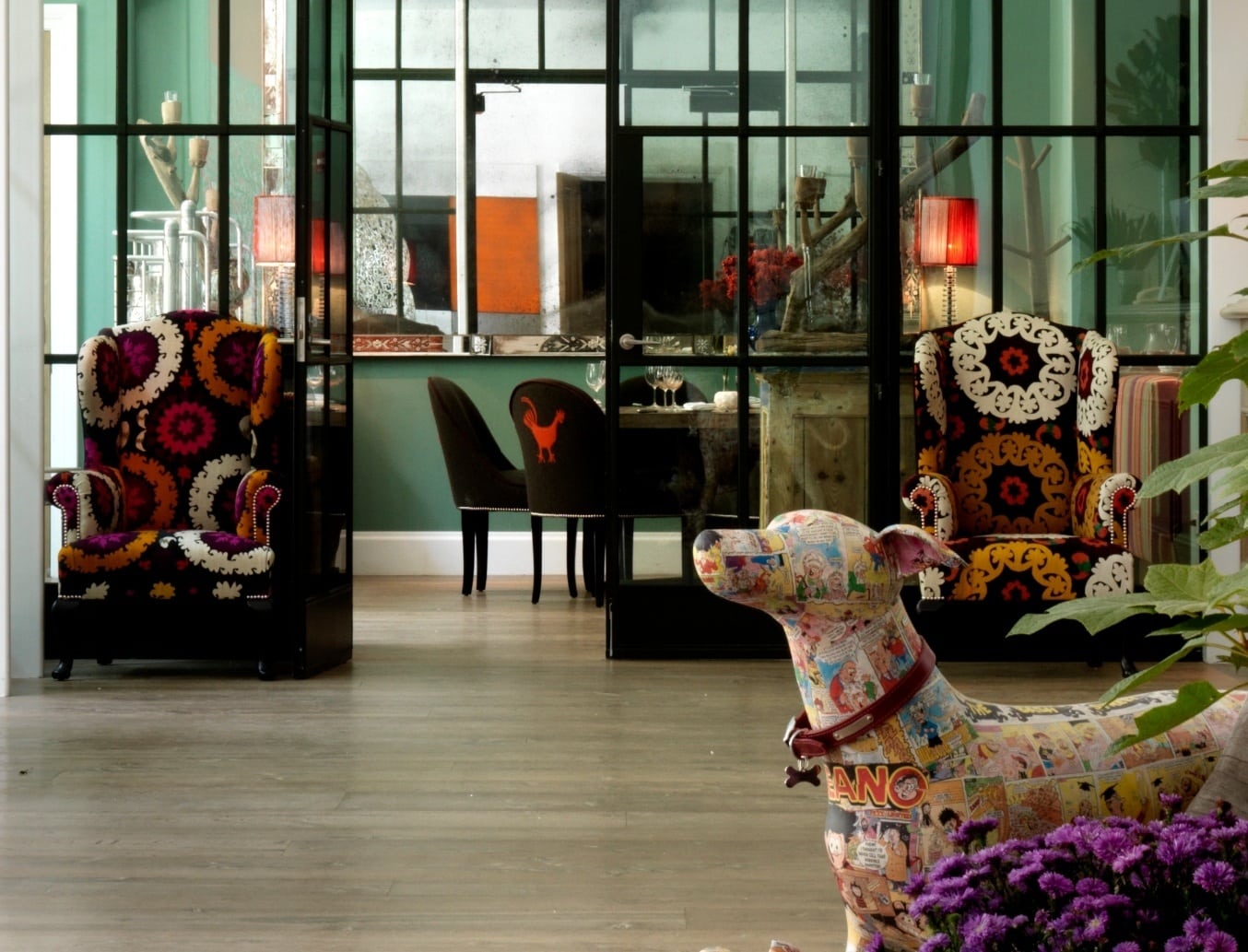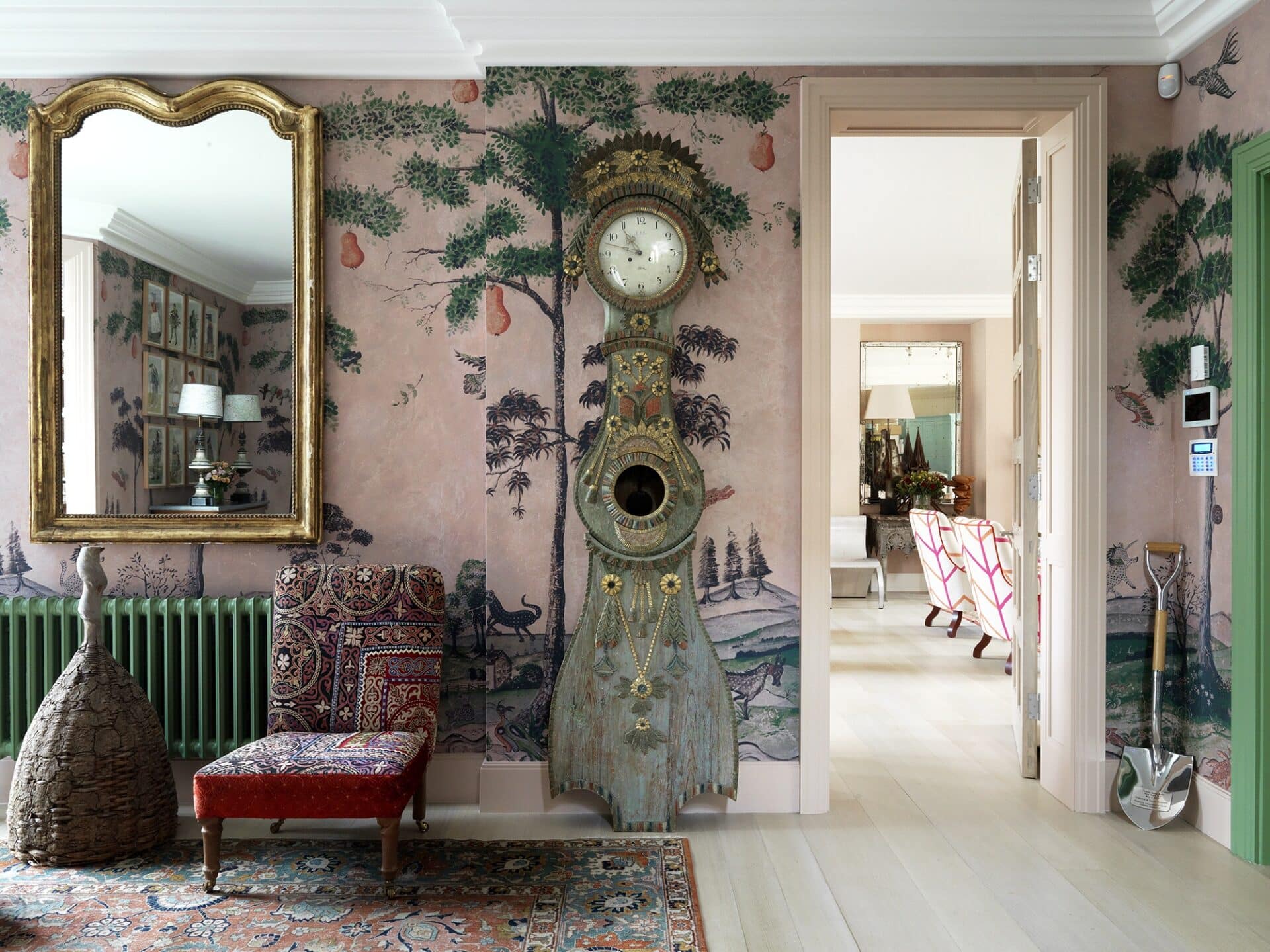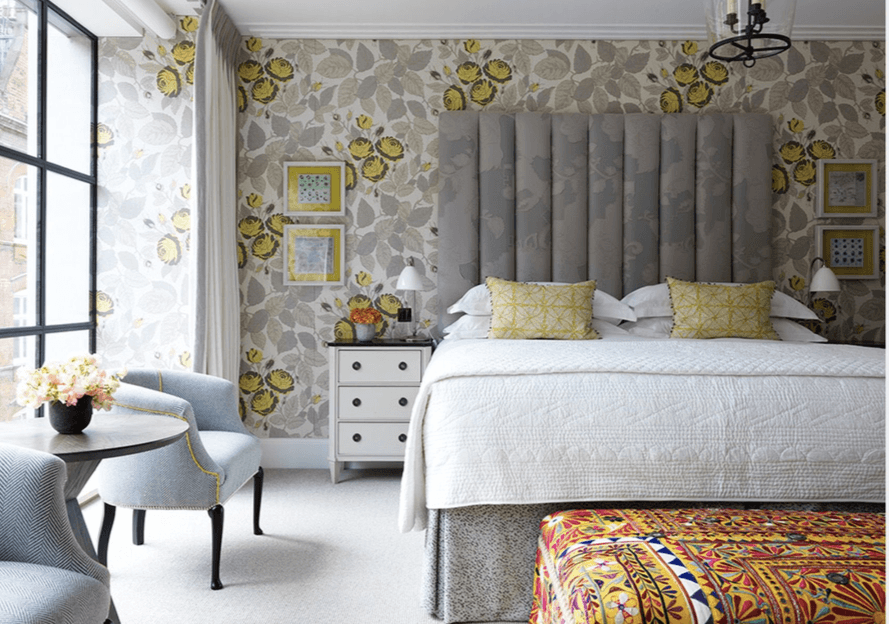I often talk about my love of textiles and how important it is to bring together the old and new in interior design. Found fabrics really capture my love of craft, of telling a story and paying homage to the past in new and exciting ways. However, using found fabrics comes with a few challenges. Over the years, I have learnt crafty tips and tricks for working with antique and found textiles.
DO use the fabric as your starting point
When you have a fabric you love and want to bring it to life in a scheme, it’s always a good idea to pick colours from the textile itself. Think of the fabric as the blueprint for the rest of the space and grow the identity from there.
Carefully building on the colours will help to create a cohesive and balanced room. Here in room 803 at The Whitby Hotel, this beautiful old Turkish rug on the end of bed stool, with its small and intricate design, led the way for the hot terracottas and sunny yellows in this scheme.
DON’T be afraid to make a statement
Found fabrics come in many forms, depending on origin, technique or era. Often, found textiles feature delicate and pretty designs, but sometimes you might be lucky enough to find a punchy and powerful design, like this traditional Mexican Otomi embroidery.
DO create a patchwork
If you have a small piece of fabric but you’re desperate to use it on a larger piece of furniture, we recommend pairing your fabric with a strong plain wool or linen that complements the original textile.
I always place the lovely antique fabric, crewel work or tapestry that I’m using on the front of a chair. The back and outer sides of the chair can be covered in a complementary plain fabric.
This fabric is such a statement that the rest of the scheme doesn’t require too much detail to feel exciting. This found fabric leads the scheme, it’s the headline that reads: ‘Here to Stay!’
DON’T shy away from mixing and matching
The joy and beauty of using found or vintage fabrics is that they can have imperfections that make them feel more unique.
Play into the imperfect by using a combination of similar fabrics. Kilim rugs are one of my favourite fabrics to collect. One afternoon, whilst browsing our design library, I realised I had a small collection of hot pink and orange pieces. I had just enough to cover my dining chairs at home, so they went straight off to the upholsterer with the help of Andrew Martin. It doesn’t matter that they are all slightly different, the mix and match creates intrigue.
In another celebration of traditional techniques, we used this Bogolan mud cloth textile from Mali on the little chair in Crosby Street Hotel‘s lobby. Paired with the Ardmore sofa from South Africa, it brings together different references as a small celebration of the African continent.
DO pay homage to your fabric
Play into the origins of your antique textiles to create a scheme that tells a story. This beautiful antique needlepoint on the ottoman is wonderfully traditional and tells a tale of age-old craft techniques. It works beautifully in my ode to Charleston and the Bloomsbury Group in the Drawing Room at Charlotte Street Hotel.
DON’T overlook the potential for wear and tear
Using antique textiles often means the fabric might be fragile. There could be embroidery, embellishment, or the textile itself may have lost its lustre over time.
If it is a more delicate fabric, we recommend using it in a location that will get less wear and tear. My trick is to always use more intricate fabrics on accent chairs in spaces where people are only passing through.
In the lobby at Crosby Street Hotel we have two antique Suzani textiles on our wing chairs. They are real statement pieces and although they get occasional use, they are safe from the weathering of a drawing room chair.
The same goes for this little slipper chair. The delicate Suzani adorns this accent chair creating texture and intrigue in the room.
DO be prepared to break the rules!
It is often tempting to store your found textile so it’s safe from harm’s way, but I have always been one to throw out the rule book!
Sometimes a textile is so special that you just have to use it! I have often been known to use the most intricate Kanthas or highly embellished pieces from my collection in the most unlikely places, like an ottoman or end of bed foot stool. My top trick is to use large perspex trays on top of ottomans, they always help to preserve your most precious pieces.

